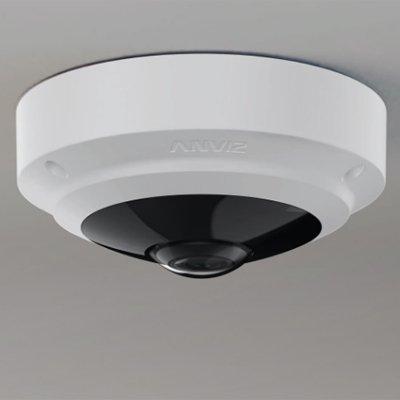More than 85% of transport networks across Western Europe are planning to install IP cameras in the near future. That’s according to a recent survey commissioned by Axis Communications, the market leader in network video and audio technology, in partnership with the global public transport organisation - The Union Internationale des Transports Publics (UITP).
Globally, the transport industry has led the way in using network video for both security and commercial applications. IP video surveillance is also increasingly playing a crucial role in the smooth and efficient running of significant parts of the UK’s rail network, highlighted by the successful deployment of network camera technology at the Canary Wharf Station. This helped the station facilitate 24-hour rail operations and improve passenger safety.
Real-time analytics for decision-making
The shift from analogue CCTV technology to IP video surveillance is helping operators utilise real-time analytics to enhance decision making, ranging from common platform changes to the more infrequent critical scenarios, such as a station clearance in response to a security threat or other emergency.
For example, machine learning technology is helping turn vast transport surveillance infrastructures into live monitoring systems. This software identifies what is ‘normal’ activity within a scene, automatically creating an alert if ‘abnormal’ activity is recognised.
However, despite this migration trend, the UK has sftruggled to keep pace with developments in such technologies. Although 97.3% of survey respondents said they had some degree of video surveillance installed, 66% cited either other priorities, funding difficulties, or no clear business case as the main barriers for not investing in more innovative IP technology.
Interestingly, approximately 75% of those who responded no clear business case relied on outdated analogue technology to meet their surveillance needs.Cybersecurity is a huge issue for the transport industry and could prove a costly oversight if technology is not implemented correctly
Cybersecure transport networks
Lucas Young, Business Development Manager, Transportation, Axis Communications states, “These results are incredibly important. The perceived lack of a business case highlights that many transport operators are unaware of the security and efficiency benefits real-time video surveillance can offer."
"To respond to security events as and when they happen; a proactive rather than reactive approach is required. That just isn’t possible with legacy CCTV equipment.”
“When analysing security footage in real-time with advanced IP technology, operators are faced with hundreds of live feeds. This may seem daunting, but automated alerts can assist in managing the increased amount of data real-time video creates, helping to identify potential threats as they happen, preventing them from becoming security incidents. This is also freeing up staff time, so they can concentrate on improving the passenger experience.”
Lucas Young continues, “While the benefits of connecting once offline technologies to a network creates an array of benefits for transport networks, it is also important to note that all devices connected to the internet are potentially vulnerable to cyber-attack. Cybersecurity is a huge issue for the transport industry and could prove a costly oversight if technology is not implemented correctly. We aim to protect our transport networks not only from physical threats, but also online ones.”




















